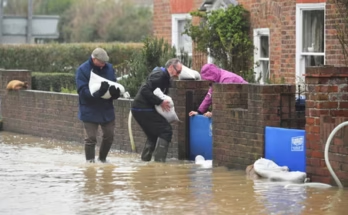In a move shaking both the insurance and real estate markets, the state of Florida has announced a $1.1 billion cut to its reinsurance safety net, a decision expected to ripple across homeowners’ insurance costs and coverage availability.
The reduction affects Florida’s Hurricane Catastrophe Fund (Cat Fund), a state-backed reserve designed to reimburse insurers after major storms. The fund has long been a critical backstop allowing private insurers to write policies in one of the nation’s most disaster-prone regions. However, officials now say the fund will operate with significantly less capital in 2025, citing fiscal pressures and a desire to limit state liability.
Why This Matters to Homeowners
Higher Premiums Likely on the Horizon
Without as much state-backed protection, insurers are being forced to seek pricier private reinsurance, a cost that inevitably gets passed down to policyholders. Industry analysts project average homeowner premiums in Florida could rise another 10%–20% over the next year, adding to already record-high costs.
In some high-risk coastal areas, annual premiums already exceed $15,000—with the potential to climb further as insurers reassess their exposure to catastrophic risk.
Fewer Insurance Options
The reinsurance cut comes amid a broader exodus of major insurers from Florida. Companies such as Farmers, AAA, and Bankers Insurance have scaled back or stopped writing new policies in the state, citing unsustainable risk levels and financial losses from recent hurricanes like Ian and Idalia.
This leaves many homeowners increasingly reliant on Citizens Property Insurance Corporation, the state-run insurer of last resort, which itself faces rising financial strain.
The Broader Risk to Florida’s Economy
Insurance availability and affordability are foundational to Florida’s $3 trillion housing market. If premiums continue to skyrocket or insurers withdraw entirely, it could have knock-on effects on property values, mortgage lending, and local economies—particularly in vulnerable coastal counties.
Real estate groups and financial experts warn that the cuts to the Cat Fund could create greater market instability just as Florida heads into peak hurricane season.
Officials Defend the Move
Florida’s Insurance Commissioner defended the $1.1 billion reduction, calling it a necessary step to reduce taxpayer exposure and align the fund with “modern market conditions.” He argued that the private sector is now better equipped to absorb catastrophic risk, although critics dispute this given the sector’s ongoing retreat from Florida.
State officials also point to efforts to stabilize Citizens Insurance and reform litigation practices blamed for inflating claim costs.
Climate Change: The Underlying Force
Florida’s decision underscores a larger, global issue: climate change is making traditional insurance models harder to sustain. As hurricanes become more frequent and severe, reinsurance markets are tightening, and premiums are rising. The shrinking Cat Fund is just the latest evidence that public safety nets are straining under climate realities.
What’s Next for Florida Residents
Homeowners Should:
- Review policies carefully for coverage gaps
- Consider resilience upgrades to lower premiums
- Explore available state grants for mitigation (e.g., roof strengthening programs)
- Prepare for higher renewal notices in 2025–2026
Conclusion:
Florida’s $1.1 billion reinsurance fund cut is not just an insurance industry headline—it’s a warning sign for homeowners, lenders, and policymakers navigating an era where climate risk and insurance affordability are fundamentally intertwined.


